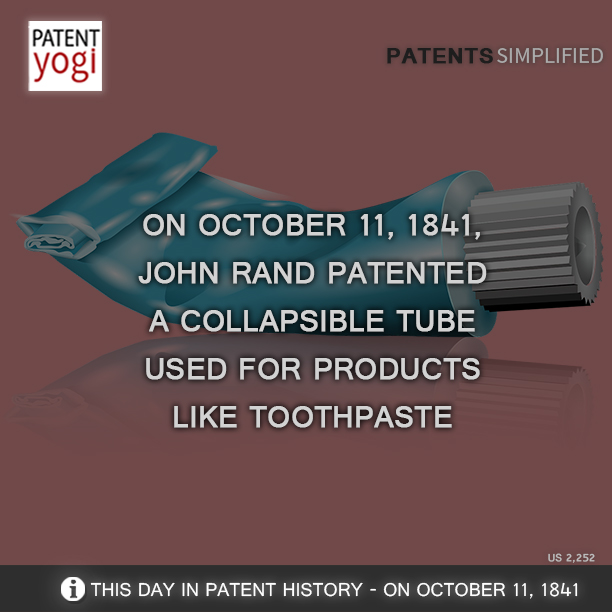Patent Information
Patent Title: Improvement in the construction of vessels or apparatus for preserving paint
Publication number: US2252 A
Publication type: Grant
Publication date: 11 Sep 1841
Inventors: John Rand
Abstract: The invention relates to a mode of preserving paints and other fluids by confining them in close metallic vessels so constructed as to collapse with slight pressure, and thus force out the paint or fluid confined therein through proper openings for that purpose, and which openings may be afterward closed air-tight, and thus prevent the paint or other fluid remaining in the vessel from being injuriously acted on by the atmosphere. The vessels so employed being at all times full, whatever be the quantity of fluid matter remaining therein, in consequence of the vessels being caused to collapse in the act of removing any quantity of the contained fluid, the vessels may therefore be said to be progressively reduced in capacity, and the previous extent of capacity closed up in proportion to the quantity of paint or other contained fluid removed, the remaining capacity being at all times full, to the exclusion of the atmosphere, as will be more fully described hereinafter when I come to describe practical means of performong my invention; and it should be understood that my invention is intended to apply to paints in a fluid or liquid state, and to vehicles and to pigments for paints in a fluid state, and to varnishes, and to other fluids which, being kept in vessels and being used from time to time, require the vessels containing them to remain full and to be closed air-tight after removing portions of the fluids; and care should be observed in using this my invention that the fluids so placed in metallic vessels should not be such as to be chemically prejudicially acted on by the metal employed, and that the fluid should not injuriously act on the metal vessels used.


